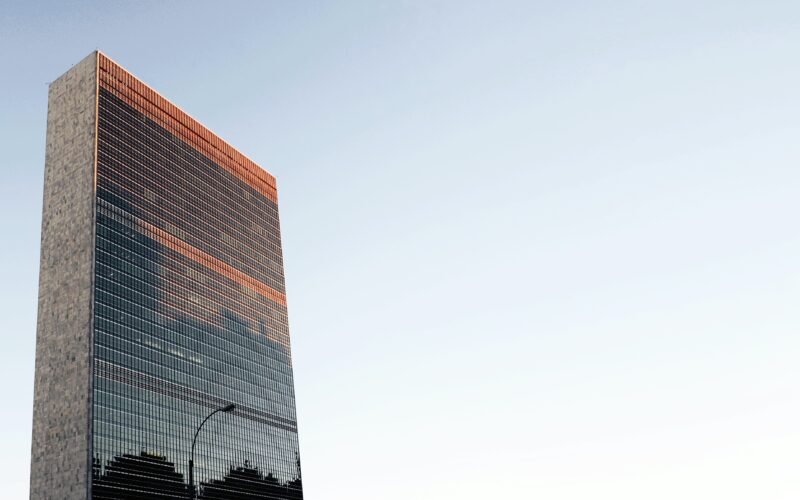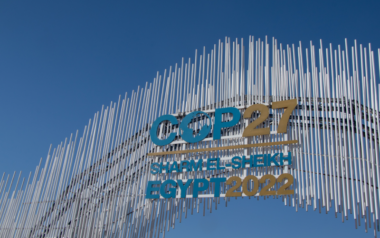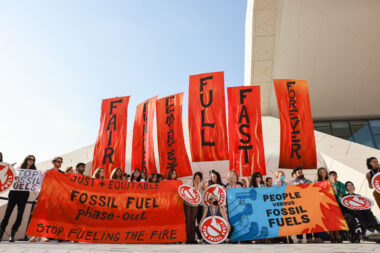The High Level Political Forum on Sustainable Development (HLPF) was held from 10-19 July 2023 in New York. With just 12% of our Sustainable Development Goals (SDGs) on track, the Forum focused on accelerating recovery from COVID-19. With 39 countries presenting voluntary national reviews (VNRs), accelerating progress on SDGs following the COVID-19 pandemic was a primary focus.
What Is The High Level Political Forum?
The HLPF was established in 2012 as an outcome from the United Nations Conference on Sustainable Development (Rio+20). It replaced the Commission on Sustainable Development, which hadn’t met since 1993. It provides a platform to follow-up on the 2030 Agenda for Sustainable Development and the SDGs at the global level and on an annual basis. The Forum itself meets every year for eight days with Heads of State and Government meeting every four years for an additional two days. This year’s Forum serves as a pre-summit for the SDG Summit in September.
High Level Political Forum 2023 Theme
This year’s theme was “Accelerating the recovery from the coronavirus disease (COVID-19) and the full implementation of the 2030 Agenda for Sustainable Development at all levels”.
According to Amina Mohammed, Deputy Secretary-General of the United Nations, the pandemic has had a “deeply negative impact”, delaying and reversing our progress on the SDGs. But she also gave examples on how it introduced some new measures that could help us make some progress, like advancements in digital learning and the potential to transform education more broadly.
With the pandemic still active and devastating many developing countries, a global call to support these countries and accelerate recovery was made.
High Level Political Forum 2023 Focuses
In addition to a mid-term review of all SDG progress, the 2023 Forum focused on reviewing five SDGs in-depth –
- SDG 6 Clean Water and Sanitation
- SDG 7 Affordable and Clean Energy
- SDG 9 industry, innovation and infrastructure
- SDG 11 sustainable cities and communities
- SDG 17 partnerships for the Goals.
SDG 6 Clean Water And Sanitation
Despite some progress being made on SDG 6, billions of people are still without access to safe water. With climate change increasing water scarcity globally, we need to increase our rate of progress six-fold to meet our 2030 goals.
SDG 7 Affordable And Clean Energy
In 2021, 91% of our global population had access to electricity and 71% had access to clean cooking fuels and technologies. But it still leaves 675 million people without electricity and 2.3 billion still cooking with unsafe and polluting fuels. Most of these people live in the least developed countries worldwide and in Sub-Saharan Africa. In seven of the most impacted sub-Saharan countries, less than 10% have access to clean fuel and technologies.
Globally, only 19% of our energy came from renewable energy sources in 2020. To meet our 2030 goals we need to triple our renewable energy capacity. By replacing coal resources with solar and wind energy, we could save $23 billion a year and create 24-25 million new jobs replacing the 6-7 million lost from coal consumption.
SDG 9 Industry, Innovation and Infrastructure
While the manufacturing industry in developed areas like Europe and North America has recovered from the pandemic and even increased its added value per capita, the same can’t be said globally or for less developed nations. On top of that, global carbon emissions from industrial processes are heading in a dangerous direction reaching a new all-time high of 36.8 billion tons, growing 0.9 percent in 2022.
SDG 11 Sustainable Cities And Communities
A global housing crisis, exacerbated by the pandemic, had 1.1 billion people living in slums or slum-like conditions in 2020. And another 2 billion are expected to live in slum-like conditions in the next 30 years. Our target 11.1 of providing safe and affordable housing to all by 2030 seems completely out of reach. To achieve SDG 11 an increased focus on urban development, public transportation and waste management is needed.
SDG 17 Partnerships For The Goals
Supporting developing nations by providing access to funding and technologies to accelerate implementation of the SDGs is vital. But a recent rise in nationalism in parts of the world has made it even more difficult to coordinate resources to developing countries. While $118 billion in sustainable development grants were made available in 2021, an estimated $3.9 trillion is needed between now and 2030.
High Level Political Forum Voluntary Reviews
Voluntary reviews aim to help advance progress towards our global goals by sharing experiences, successes and learnings between countries and mobilizing stakeholders.
At the Forum, 39 presenters brought forward voluntary national reviews (VNRs) on their progress towards the 2030 Agenda: Bahrain, Barbados, Belgium, Bosnia and Herzegovina, Brunei Darussalam, Burkina Faso, Cambodia, Canada, Central African Republic, Comoros, Chile, Croatia, Democratic Republic of the Congo, European Union, Fiji, France, Guyana, Iceland, Ireland, Kuwait, Liechtenstein, Lithuania, Maldives, Mongolia, Poland, Portugal, Romania, Rwanda, Saudi Arabia, Singapore, Slovakia, St Kitts & Nevis , Tajikistan, Timor-Leste, Turkmenistan, United Republic of Tanzania , Uzbekistan, Vietnam and Zambia.
Canada’s Voluntary National Review
Canada brought forward its second voluntary review, having presented the first in 2018. The 2023 review focused on efforts made to advance Canada’s five national priorities:
- SDG 1 End poverty in all its forms everywhere
- SDG 4 Ensure inclusive and equitable quality education and promote lifelong learning opportunities for all
- SDG 5 Achieve gender equality and empower all women and girls
- SDG 13 Take urgent action to combat climate change and its impacts
- SDG 17 Strengthen the means of implementation and revitalize the Global Partnership for Sustainable Development
SDG 1 End Poverty In All Its Forms Everywhere
Canada reported progress on achieving its goal of decreasing poverty by 50% by 2030. But with an overall poverty rate of 7.4% in 2021 and 18.4% of Canadian households experiencing food insecurity, Canada still has work to do to support the most vulnerable.
Housing affordability is still a major issue in Canada. According to the National Bank of Canada 2023 Q1 Housing Affordability report, home buyers in Toronto currently need to save for 25 years to afford a down payment. Figures are even worse in Vancouver at 37 years, making home ownership out of reach for most.
SDG 4 Ensure Inclusive And Equitable Quality Education And Promote Lifelong Learning Opportunities For All
Inclusive and equitable education is key to achieving SDG 1 and SDG 4. In 2019, 5.7% of Canada’s GDP was spent on education, a total of $14,392 per full-time student, compared to $11,990 on average from other OECD countries. Contributing to both SDGs, Canada recently made a $30 billion investment in early learning and child care, providing more than a million children under six with access to early learning and child care.
SDG 5 Achieve Gender Equality And Empower All Women And Girls
Supporting gender equality, on August 31, 2021, Canada’s Pay Equity Act came into effect ensuring equal pay for work of equal value in federally-regulated workplaces. And not a moment too soon. In 2021, there was an 11% pay gap between men and women, with women in Canada earning 0.89 cents for every dollar a man earned, the equivalent to a $3.52 hourly rate gap.
Recognizing gender-based violence (GBV) as a significant barrier to achieving gender equality, in 2022, Canada announced a 10-year National Action Plan to End Gender-Based Violence. The program provides support to the more than 11 million people in Canada who have experienced partner violence.
SDG 13 Take Urgent Action To Combat Climate Change And Its Impacts
Canada needs to reduce greenhouse gas emissions by 45% below 2005 levels by 2030 and carbon pollution to net zero by 2050. 2022 saw the introduction of an emissions reduction plan to reach these goals including an investment of $1.6 billion in adaptation and disaster response.
SDG 17 Strengthen The Means Of Implementation And Revitalize The Global Partnership For Sustainable Development
Successful partnerships are key to the success of the entire 2030 Agenda. Launched in 2021, the Moving Forward Together: Canada’s 2030 Agenda National Strategy calls for whole-of-society collaboration, both domestically and abroad. The SDG Funding Program provides $59.8 million in funding over 13 years (2018 to 2031) to support the participation of all stakeholders including not-for-profit organizations and the private sector.
Internationally, in 2021, at the G7 summit, Canada announced increases in international assistance including doubling investment in Climate Finance to $5.3 billion over five years.
Conclusion
As we stand, by 2030 only a third of countries will reach the target of halving national poverty levels, leaving 575 million people in extreme poverty. With just 12% of our Sustainable Development Goals (SDGs) on track and no or backwards progress on 30% of our SDGs, the HLPF helped sound the alarm that’ll continue into September’s SDG Summit.
Sustayn is designed to present the most useful recommendations for environmentally friendly approaches and items. We update links when possible, but note that links can be broken and subject to change.






